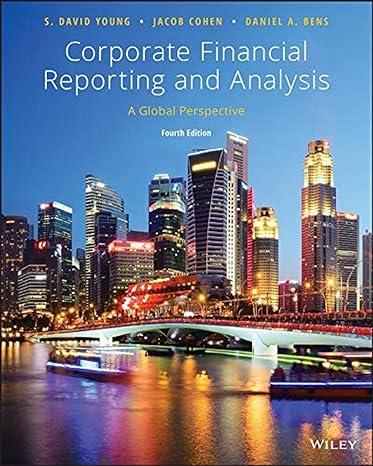Answered step by step
Verified Expert Solution
Question
1 Approved Answer
The Case of Stork Engineering Last year Stork Engineering purchased new machinery for 160,000 for use in manufacture of a part used in manufacturing the
The Case of Stork Engineering Last year Stork Engineering purchased new machinery for 160,000 for use in manufacture of a part used in manufacturing the final product. The current level of output is 400,000 items per year and the production will last another eight years. The direct manufacturing cost per unit is 90 pence and the raw material input costs another 60 pence per unit. Smart Engineers, a competitive manufacturer of the above part, has developed new technology to manufacture the part and has offered to supply Stork Engineering at 145 pence per unit on one-year renewable contract basis. As a part of contract, it has also offered to fulfil the entire requirement of Stork Engineering but each batch of supplies would consist of no less than 50000 items. Stork Engineering Purchasing Manager believes that the offer is very attractive. In the departmental meeting he argues that, with cost of own manufacturing running at 154 pence per unit which, of course, includes the capital cost of machine, the savings will total 302,222 over 8 years. He, therefore, proposes that the indigenous manufacturing should be completely stopped, sell the machinery purchased only last year and accept the Smart Engineers offer. The Production Manager, who was responsible for decision of buying and installing the machinery last year, has just come back after attending a Short Course on Project Appraisal in a prestigious Business School. He asserts that apart from problems of quality control and security of supplies, there is no economic case for purchasing the part from Smart Engineers. To support his assertion, he argues that machinery is virtually new and still has an economic life of eight years, and being of specialised nature has no alternative uses and could be sold only for 20,000 in the market. With capital allowance at 25 per cent on declining balance method on plant and machinery its current book value is 120,000, and if sold in the market now would result in a loss of 100,000. He claims that this initial loss of 100,000 combined with an annual savings of 15000 over next eight years will give a return on 'buy rather than make' of only 12 per cent whereas the company's required rate of return is estimated at 17 per cent. He reinforces his claim by pointing out that this was a highly conservative analysis since other serious problems have been ignored. The parts produced by the Smart Engineers using new technology may vary in length by 4 mm, which may not cause a quality problem in the final product but would not only involve some redesign in the subassembly but also need supplementing the subassembly with another machine costing 20,000. Even allowing for the tax allowances on the new machine, this in his view represents an unnecessary expenditure. The corporation tax rate currently is 20 per cent. Furthermore, the supply of large batches of the part by Smart Engineers would cause an average stockholding of 25,000 parts throughout the year as against the current stocks of two weeks supplies of materials and the finished part, and ten per cent more of warehouse space would be occupied. The operator on the machine cannot be made redundant for another eight years as specified in his contract. The only alternative is to transfer him to another department at his current salary of 25,000 per annum against the advertised post of an operator at 20,000 per annum. The Purchasing Manager considered the problem of operator as a minor but perceived the increase in inventory as a real issue. The warehouse is only 60 per cent utilised and anextension of the warehouse is planned only in another four years time. This would cost 200,000 and the expected life of warehouse extension is estimated at 25 years for (straight line) depreciation purposes. Since the use of this capacity would not involve any cash outlay, the Purchasing Manager maintains that cost of inventory could be ignored. He claims that he could be spending just 20,000 and would be saving 302,222 which is an excellent opportunity What should be the decision of Stork Engineering? Support your recommendation with financial appraisal. NPV Calculation of Making a. Manufacturing Cost (2 marks) b. Raw Materials (2 marks) c. Salary of operator (1 mark) d. Total Cost (2 marks) e. Tax saved on total cost (2 marks) f. Change in Inventory (2 marks) g. Warehouse Extension (1 mark) h. Tax saved on warehouse depreciation (2 marks) i. Tax saved on machine depreciation (4 marks) j. Total Cash Flows (2 marks) k. NPV (2 marks) NPV Calculations of Buying l. Purchasing cost (2 marks) m. Opportunity cost of operator (in other Department) (1 mark) n. Total Cost (1 mark) o. Tax saved on total cost (2 marks) p. Change in Inventory (3 marks) q. Warehouse Extension (1 mark) r. Tax saved on warehouse depreciation (2 marks) s. Sale of Old Machine (1 mark) t. Tax saved on sale of machine (2 marks) u. Cost of Suppl. Machine (1 mark) v. Tax saved on Suppl. Machine (3 marks) w. Total Cash Flows (1 mark) x. NPV (2 marks) Correct decision based on above analysis (4 Marks)
Step by Step Solution
There are 3 Steps involved in it
Step: 1

Get Instant Access to Expert-Tailored Solutions
See step-by-step solutions with expert insights and AI powered tools for academic success
Step: 2

Step: 3

Ace Your Homework with AI
Get the answers you need in no time with our AI-driven, step-by-step assistance
Get Started


